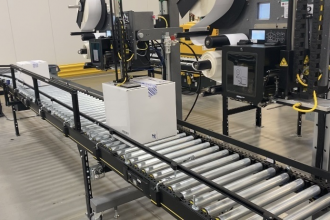Are You Data Rich, Intelligence Poor?

How to access and analyze your data for predictive maintenance.
As the industry becomes increasingly reliant on technology and automated material handling equipment, it’s essential to keep those capital investments in top shape. Downtime due to broken down equipment can cost an organization big financial loss, and companies should do all they can to avoid that scenario. The tools and information to avoid such shut downs are out there, but not everyone is accessing that data or analyzing it properly.
When you’ve got all that data at your fingertips, you’re data rich. But if you’re not able to use that data, you’re intelligence poor. The key is to learn how to access the data, which data matters, and then put it to use for your equipment and operations.
The first step is to ensure the equipment you’re using does, in fact, contain a wealth of data inside it. Most of today’s modern equipment is intelligent and equipment and does have that data ready to access. For instance, if you’ve got a drive that turns a motor on a conveyor, there’s likely data on how it’s performing this task. The second step is to ensure that the data is connected to your ethernet network—this is the infrastructure you must put in place. Again, the odds are in favor of that scenario.
From there, you want to layer on analytics for all that data. Not everything you collect will be useful or meaningful. Without some sort of analytics tool, you won’t be able to discern which is which. You’re after data that can provide you with information that predicts when maintenance is needed. For years, this was a manual task, requiring many man hours. That’s not only a costly option, but increasingly a more difficult one as the available labor pool shrinks.
Right now, we are on the cusp of an AI revolution, which will in time, bring all of this analyzing to realization, quickly and easily. But that aspect of predictive maintenance and condition monitoring remains somewhere in the near future. In the meantime, the bridge between manual data capture and analytics and equipment with built-in AI analytics starts with good conversations with consultants or OEM partners. Together, you should be able to identify what issues you have with the machines, and what devices you have related to them.
For instance, if you’ve got equipment that seems to fail due to an out of balance motor, convey that to your equipment partner. They might be able to analyze the data and determine that there are excessive vibrations contributing to the problem. With that information, your partner could determine when those issues are most likely to arise and you can act in a preventative fashion.
There’s plenty of data out there, but analyzing it is the important step. Put together, you’ll no longer be data rich and intelligence poor.
For more information about the Solutions Community: mhi.org/solutions-community
For further articles from the Solutions Community:
For a Successful Software Implementation, Focus on the People
Sustainability in the Warehouse—Part 1
How to Use Software to Attract and Retain Talent
Digitization of Intralogistics: Software
Forward Pick Area—Design and Operations
Maintenance Check: From Reactive to Predictive
Digitization of Intralogistics—Replenishment



